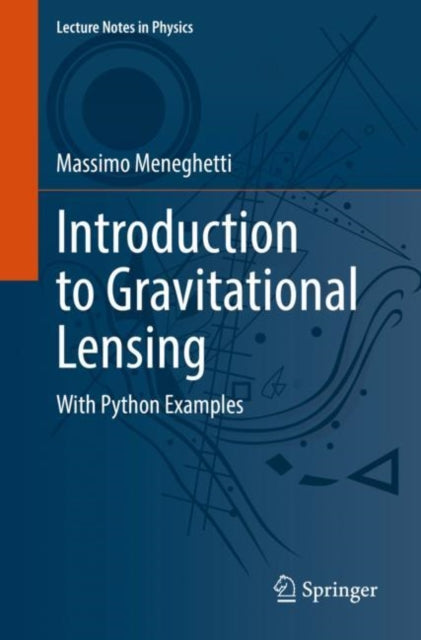Massimo Meneghetti
Introduction to Gravitational Lensing: With Python Examples
Introduction to Gravitational Lensing: With Python Examples
YOU SAVE £10.86
- Condition: Brand new
- UK Delivery times: Usually arrives within 2 - 3 working days
- UK Shipping: Fee starts at £2.39. Subject to product weight & dimension
Bulk ordering. Want 15 or more copies? Get a personalised quote and bigger discounts. Learn more about bulk orders.
Couldn't load pickup availability
- More about Introduction to Gravitational Lensing: With Python Examples
This book provides an accessible introduction to the phenomenology of gravitational lensing and its astrophysical applications, suitable for advanced undergraduates and graduate students interested in this rapidly evolving field. It also serves as a guide for senior researchers interested in ongoing or future surveys and missions like DES, Euclid, WFIRST, and LSST. The author utilizes simple codes written in Python to facilitate the understanding of gravitational lensing and its theoretical foundations, making it an ideal resource for those interested in learning Python programming as well.
Format: Paperback / softback
Length: 412 pages
Publication date: 06 November 2021
Publisher: Springer Nature Switzerland AG
Gravitational lensing is a fascinating phenomenon that has profound implications for our understanding of the universe. In this comprehensive book, we delve into the intricacies of gravitational lensing, presenting it in an accessible and engaging manner. We begin by exploring the fundamental principles of this phenomenon, including the bending of light by massive objects, the formation of gravitational lenses, and the effects of gravitational lensing on observed celestial objects.
We then move on to discuss the wide range of astrophysical applications of gravitational lensing. From studying the structure of our galaxy to searching for exoplanets, from investigating dark matter in galaxies and galaxy clusters to exploring several aspects of cosmology, including dark energy and the cosmic microwave background, gravitational lensing plays a crucial role in unraveling the mysteries of the cosmos.
To facilitate the understanding of gravitational lensing and its related observational techniques, the author employs simple codes written in Python. This approach not only enhances the comprehension of gravitational lensing but also serves as a valuable primer for learning the Python programming language, which is gaining widespread popularity in both academia and the private sector.
Whether you are an advanced undergraduate or graduate student interested in delving into the field of gravitational lensing or a senior researcher seeking to explore ongoing or future surveys and missions such as DES, Euclid, WFIRST, and LSST, this book will provide you with the necessary knowledge and tools to embark on your journey into the captivating world of gravitational lensing. So, grab your copy and start exploring the wonders of this phenomenon today!
Weight: 660g
Dimension: 155 x 236 x 34 (mm)
ISBN-13: 9783030735814
Edition number: 1st ed. 2021
This item can be found in:
UK and International shipping information
UK and International shipping information
UK Delivery and returns information:
- Delivery within 2 - 3 days when ordering in the UK.
- Shipping fee for UK customers from £2.39. Fully tracked shipping service available.
- Returns policy: Return within 30 days of receipt for full refund.
International deliveries:
Shulph Ink now ships to Australia, Belgium, Canada, France, Germany, Ireland, Italy, India, Luxembourg Saudi Arabia, Singapore, Spain, Netherlands, New Zealand, United Arab Emirates, United States of America.
- Delivery times: within 5 - 10 days for international orders.
- Shipping fee: charges vary for overseas orders. Only tracked services are available for most international orders. Some countries have untracked shipping options.
- Customs charges: If ordering to addresses outside the United Kingdom, you may or may not incur additional customs and duties fees during local delivery.


